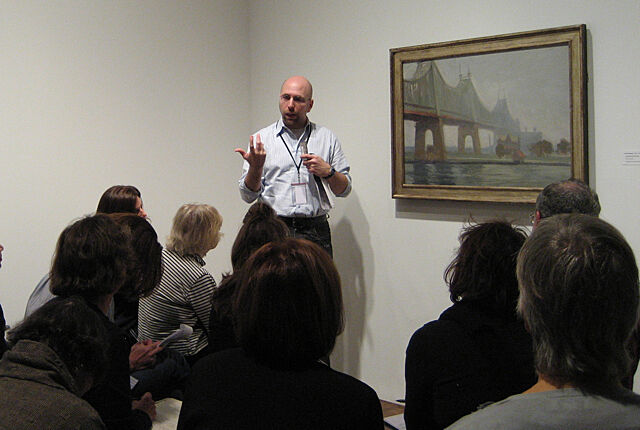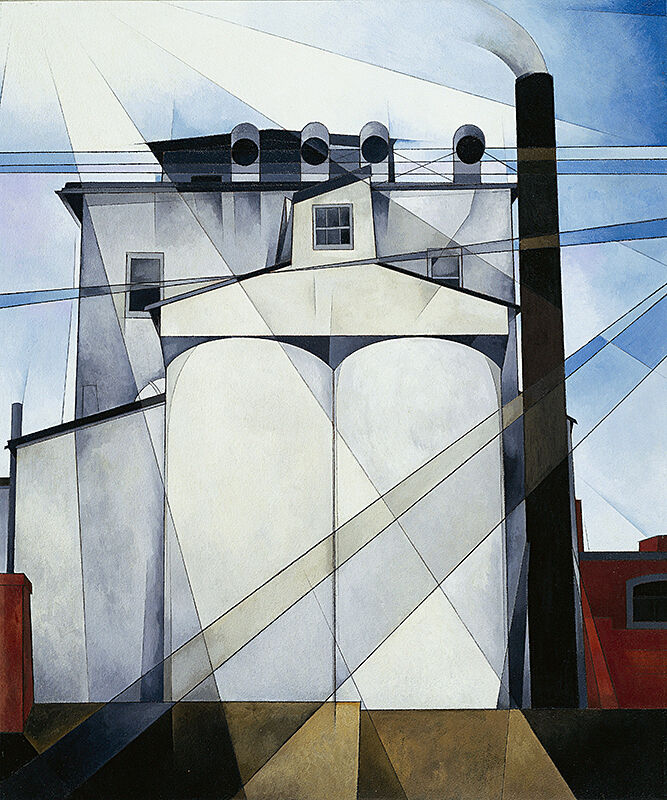Whitney Course: Inside Modern Life
Dec 17, 2010
Throughout the year, the Whitney offers multi-week courses on key issues in modern and contemporary art and culture. This fall, the course, Inside Modern Life: Edward Hopper and His Time--led by Michael Lobel, Associate Professor of Art History at Purchase College, State University of New York—explored the different modes of realism that developed in American art during the early twentieth century and urban life as a subject for this group of painters.
On November 17, Lobel addressed the formal vocabulary Hopper and his peers used to portray industrialization in the United States. Comparing Hopper’s studies of urban structures to the Precisionists’ depiction of industrial sites, Lobel singled out the radical treatment of scale in many of these works as a critical development in the artists’ efforts to represent the rapidly changing world around them.
As the participants examined Charles Demuth’s My Egypt, Lobel directed their attention to how the concrete grain elevator towers over the roofs of the older brick buildings, visible at the bottom of the painting. “The painting’s point of view conveys the massive shift in scale that people were experiencing due to industrial growth, Lobel said. Hopper also explored the changing scale of the city’s infrastructure. Underneath the double-cantilevered decks of Hopper’s 1913 painting, Queensborough Bridge, the artist painted a small house. “Point of view is crucial to this work,” explained Lobel. “Hopper shows the immensity and power of this new feat of industrial engineering, but also includes a small, almost rural structure to counter that viewpoint.”
By Alix Finkelstein, Education intern


